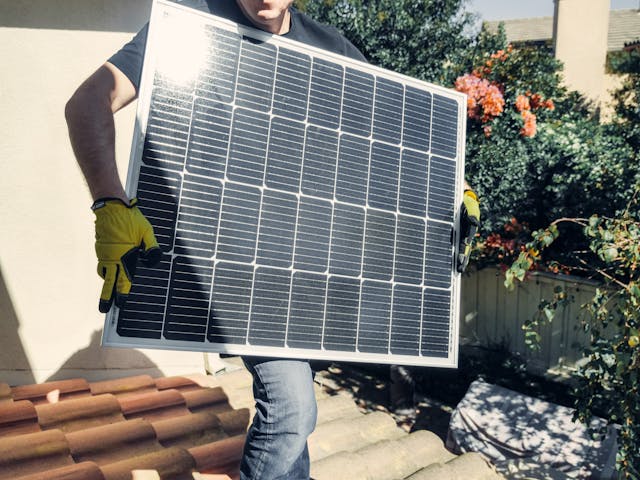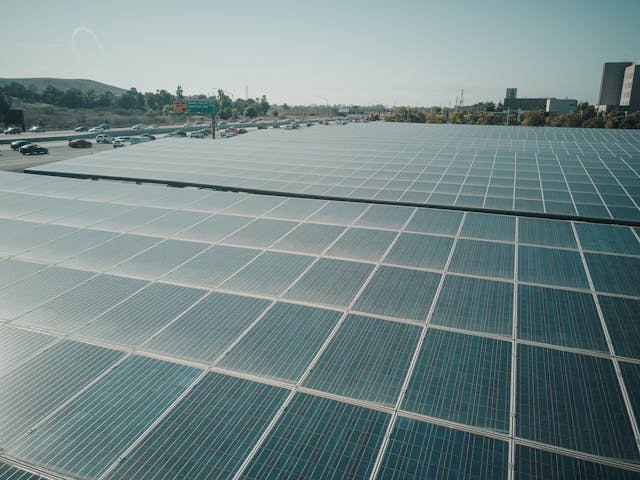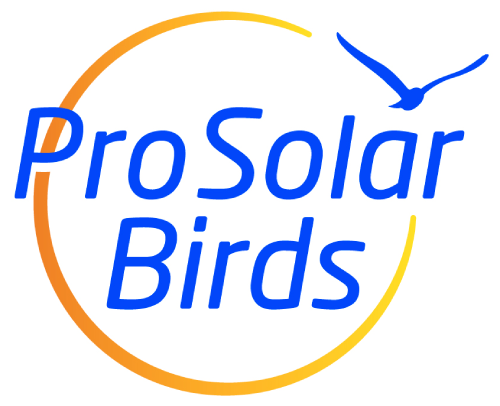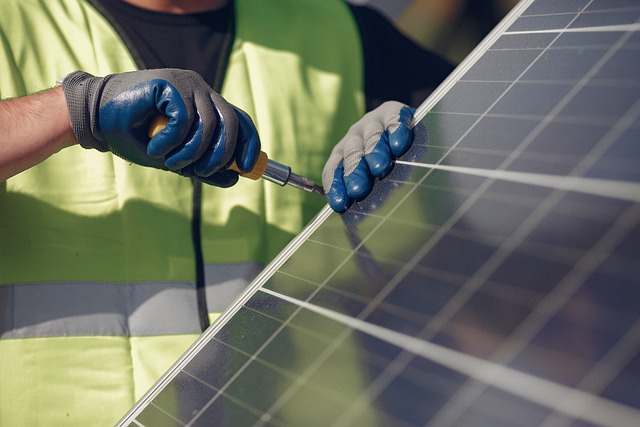As the world increasingly turns towards renewable energy sources to combat climate change and reduce reliance on fossil fuels, solar power stands out as a shining beacon of sustainability. However, the journey towards a greener future doesn’t end with the installation of solar panels; it begins there.
In this article, we delve into the essential topic of solar panel maintenance, exploring why it matters, what it entails, and how it can ensure the longevity and efficiency of your solar energy system.
From understanding the basic components of solar panels to implementing seasonal maintenance routines and troubleshooting common issues, we aim to provide you with everything you need to know to keep your solar panels operating at their peak performance.
Table of contents
- Understanding solar panels
- Why solar panel maintenance matters
- Essential maintenance tasks
- Long-Term Strategies for Panel Health
- FAQ’s
Understanding solar panels
Solar panels are the heart of any solar energy system, converting sunlight into electricity through a process known as the photovoltaic effect. Understanding the basic components and functionality of solar panels is essential for effective maintenance and optimal performance.
A. Basic Components:
- Photovoltaic Cells: These cells, typically made of silicon, are the building blocks of solar panels. They absorb sunlight and generate direct current (DC) electricity.
- Encapsulation: Solar cells are encapsulated between layers of protective material, usually tempered glass on the front and a polymer backsheet, to withstand environmental factors such as rain, hail, and UV radiation.
- Frame: The frame provides structural support for the solar panel and facilitates installation onto rooftops or mounting structures.
- Junction Box: This component houses electrical connections and wiring, allowing for the safe transfer of electricity generated by the solar panels.
B. Lifespan and Durability Factors:
- Lifespan: Solar panels are designed to last for decades, with most manufacturers offering warranties ranging from 20 to 25 years. However, factors such as quality of materials, manufacturing standards, and environmental conditions can influence the actual lifespan of solar panels.
- Durability: Solar panels are built to withstand various weather conditions, including rain, snow, wind, and hail. Quality construction and proper installation are crucial for ensuring the durability of solar panels over their lifespan.
- Degradation: While solar panels are durable, they may experience a gradual decline in performance over time due to factors such as exposure to sunlight, temperature fluctuations, and environmental pollutants. Understanding the degradation rate of solar panels is important for assessing their long-term performance and implementing maintenance strategies to mitigate degradation effects.
By gaining a thorough understanding of the basic components and durability factors of solar panels, solar system owners can better appreciate the importance of regular maintenance in preserving the efficiency and longevity of their investment in solar energy.

Why solar panel maintenance matters
Proper maintenance of solar panels is not just a matter of aesthetics; it directly impacts the efficiency, longevity, and overall performance of a solar energy system. Neglecting maintenance can lead to significant reductions in energy production and potential costly repairs.
Here’s why solar panel maintenance matters:
A. Impact of Neglect on Efficiency:
- Dirt and Debris: Accumulation of dirt, dust, pollen, bird droppings, and other debris on the surface of solar panels can obstruct sunlight absorption, reducing the efficiency of energy conversion.
- Shading: Shading from nearby trees, buildings, or other obstructions can cast shadows on solar panels, leading to uneven energy production and decreased overall output.
- Soiling: Persistent soiling from environmental factors such as pollution, pollen, and bird droppings can create a film on the surface of solar panels, further reducing light absorption and energy generation.
B. Cost-saving Benefits of Regular Upkeep:
- Maximizing Energy Production: By ensuring that solar panels are clean and free from obstructions, maintenance efforts can maximize energy production, allowing solar system owners to reap the full benefits of their investment in renewable energy.
- Avoiding Potential Damage: Regular maintenance inspections can help identify early signs of wear, damage, or malfunction, allowing for timely repairs or replacements to prevent more significant issues and costly downtime.
- Extending Lifespan: Implementing a proactive maintenance routine can extend the lifespan of solar panels and other system components, reducing the need for premature replacements and increasing the return on investment over the long term.
In essence, regular maintenance is not just a precautionary measure; it is a proactive strategy to optimize the performance, reliability, and longevity of solar energy systems. By investing time and effort in proper maintenance, solar system owners can ensure that their renewable energy investment continues to deliver clean, sustainable power for years to come.
Essential maintenance tasks
To keep solar panels operating at peak efficiency and ensure the longevity of the entire solar energy system, certain maintenance tasks should be performed regularly. Here are some essential maintenance tasks:
A. Cleaning Procedures and Frequency:
- Regular Cleaning: Solar panels should be cleaned periodically to remove dirt, dust, pollen, bird droppings, and other debris that can accumulate on the surface and hinder sunlight absorption.
- Cleaning Methods: Use a soft brush, sponge, or cloth with mild soap and water to gently scrub the surface of the solar panels. Avoid abrasive materials or harsh chemicals that could damage the panels.
- Frequency: The frequency of cleaning depends on factors such as location, weather conditions, and environmental pollutants. In general, solar panels should be cleaned every 3 to 6 months, or as needed, to maintain optimal performance.
B. Inspection of Connections and Wiring:
- Visual Inspection: Regularly inspect the junction box and electrical connections for signs of wear, corrosion, loose wires, or damage. Check for any abnormal heating or burning smells, which could indicate electrical issues.
- Tightening Connections: Ensure that all electrical connections are tight and secure to prevent voltage drops or potential fire hazards. Use caution and follow safety guidelines when working with electrical components.
- Professional Inspection: Consider hiring a qualified electrician or solar technician for a thorough inspection of the electrical system annually or as recommended by the manufacturer.
C. Monitoring System Performance:
- Data Monitoring: Utilize monitoring software or systems provided by the solar panel manufacturer or installer to track energy production, voltage, and other performance metrics.
- Performance Analysis: Regularly review monitoring data to identify any deviations from expected performance levels, which could indicate issues such as shading, equipment malfunctions, or degradation.
- Prompt Action: Act promptly to address any anomalies or performance issues detected through monitoring, such as cleaning panels, adjusting settings, or scheduling professional maintenance or repairs.
By incorporating these essential maintenance tasks into a regular routine, solar system owners can ensure that their panels operate efficiently and reliably, maximizing energy production and prolonging the lifespan of their investment in solar energy.

Long-Term Strategies for Panel Health
FAQ’s
How often should I clean my solar panels, and what is the best method?
Solar panels should be cleaned every 3 to 6 months, depending on factors like location and environmental conditions. The best cleaning method involves using a soft brush, sponge, or cloth with mild soap and water to gently scrub the surface. Avoid abrasive materials or harsh chemicals that could damage the panels.
Can solar panels be damaged by extreme weather conditions such as hail or high winds?
While solar panels are designed to withstand various weather conditions, including hail and high winds, severe weather events can potentially cause damage.
Hailstorms, in particular, can lead to cracks or breakage in the glass surface of solar panels.
Regular inspections following extreme weather events are recommended to assess for any signs of damage and ensure continued functionality.
Is it necessary to monitor the performance of my solar panels, and how can I do so?
Monitoring the performance of solar panels is essential for identifying issues such as shading, equipment malfunctions, or degradation early on.
Many solar panel systems come equipped with monitoring software or systems that track energy production, voltage, and other performance metrics in real-time.
Utilizing these monitoring tools allows for proactive maintenance and optimization of system performance.
How can I protect my solar panels from potential theft or vandalism?
While solar panels are generally installed in secure locations, protecting them from theft or vandalism is still a valid concern.
Installing security measures such as motion-activated lights, surveillance cameras, or anti-theft mounting systems can help deter potential intruders. Additionally, marking or engraving solar panels with unique identifiers can aid in recovery efforts if theft does occur.

